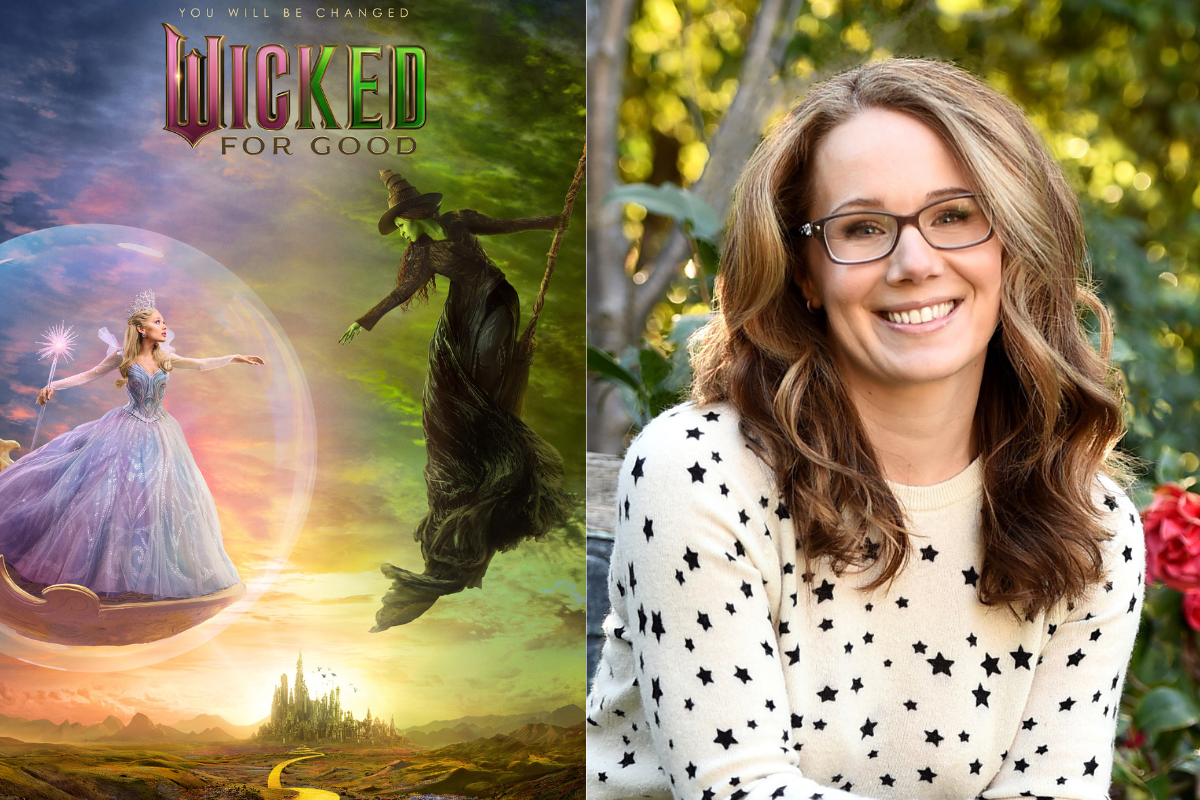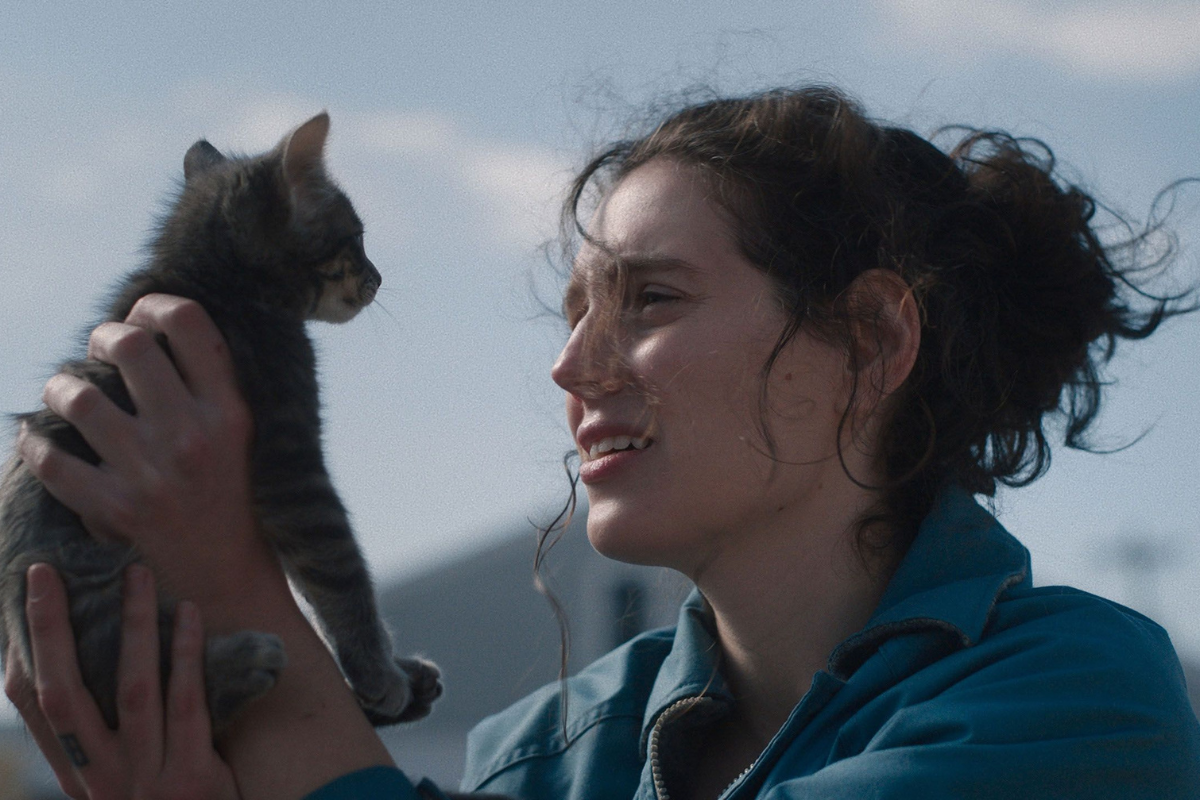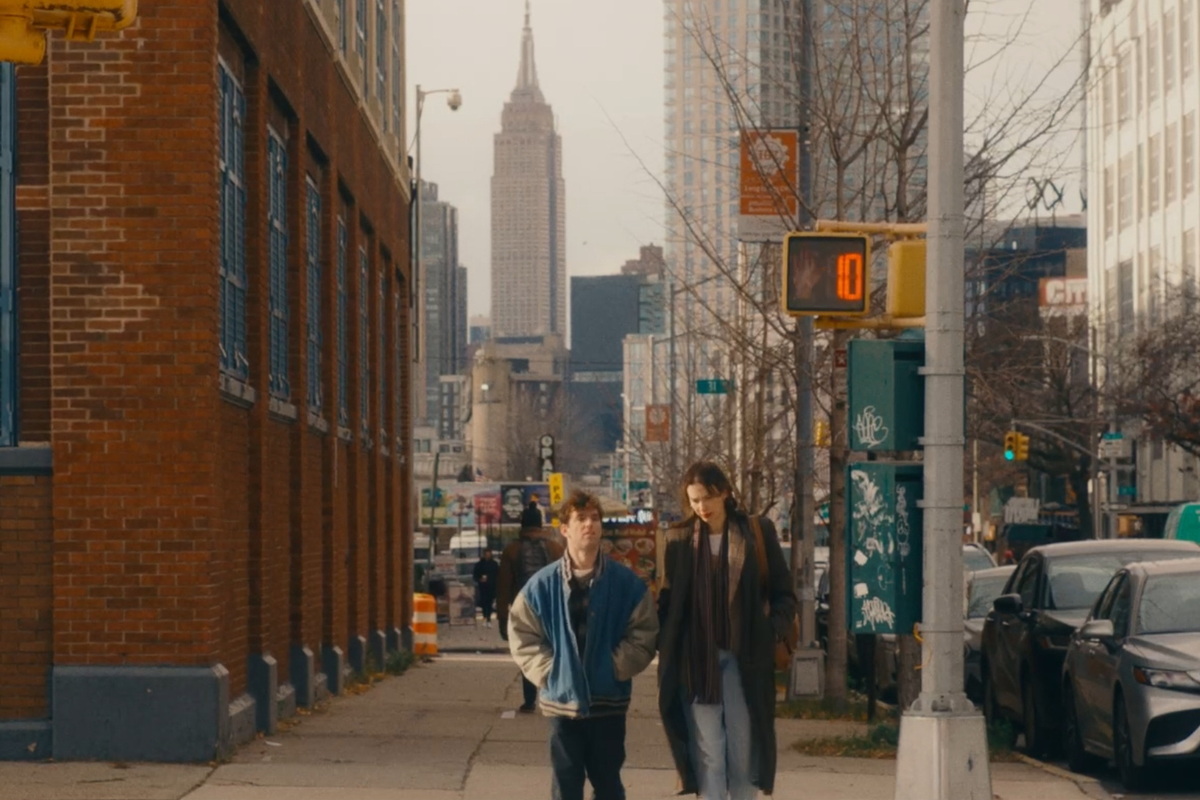‘Death of a Unicorn’ – The Class Satire
‘Death of a Unicorn’ writer-director Alex Scharfman discusses the script inspiration and development, the importance of aligning the emotional core with satire, the blend of classic horror elements with a unique twist on unicorn mythology, and more!
A father (Paul Rudd) and daughter (Jenna Ortega) accidentally hit and kill a unicorn while en route to a weekend retreat, where his billionaire boss (Richard E. Grant) seeks to exploit the creature's miraculous curative properties.
It's never a bad time for a fun creature feature to hit the big screens. And this one, Death of a Unicorn, from filmmaker Alex Scharfman hits all the twists, turns and quirky action beats paired up with a great ensemble of characters (especially those nostalgic winks for us cinephiles out there) to make it a fun time to cozy up in the theater with your concession stand snacks of choice.
Alex Scharfman recently discussed with Script the inspiration and development for the script, the importance of aligning the emotional core with satire, particularly the theme of doing the “right” thing for loved ones, and highlights the blend of classic horror elements with a unique twist on unicorn mythology. Plus, he dives into his extensive research on unicorns and their historical significance, and how that influenced the overall design process for the film’s unicorns.
This interview has been edited for content and clarity.
Sadie Dean: Knowing that the seed of the story was inspired by that opening scene, replaying it in your head, using that as a jumping off point, what was your process for developing and fleshing out the characters for this world?
Alex Scharfman: That idea was just something that struck me, and it felt like it was like a short film. And I was kind of like, 'Well, I don't want to make a short film, and that would also be a prohibitively expensive short film.' So, I was like, ‘Well, what is it then?’ I feel like so much of writing is trying to find that indelible nugget of something, and being like, 'Where does this lead?'
The metaphor, I'll mix a couple metaphors, but the metaphor I always think of is those guys on the beach with the metal detectors, ‘There's something here, and I don't know what, you just have to start digging.’ And then the other metaphor that I do love, which I don't take credit for, because Stephen King wrote about it in his book On Writing, is the act of writing. In his description, and I find it to be true in my most satisfying work that I've done, is it's not an act of creation as much of discovery. And the metaphor he has is, you're an archeologist finding a fossil in the ground and then trying to bring it up out of the ground without breaking any bones. Maybe it's just my own lack of ownership, of decision making - to put it outside of myself, it's not just I'm making something up - there is something that exists in the universe, and I'm trying to tune my brain to what it is and figure out what it wants to be, what the natural expression of that idea is.
RELATED: Challenging Perceptions: A Conversation with ‘Bob Trevino Likes It’ Writer-Director Tracie Laymon
So, once I had that idea of a father and daughter hitting a unicorn with their car, it kind of naturally is, 'OK, well, where are they going? What is a unicorn?' And then once you start doing research about what is a unicorn, it brings you to all the curative properties and how they've been valued with panaceas for years. And then you start thinking about, ‘OK, well, pharmaceuticals, maybe that has something to do with it.’ And then dig into evil unicorn mythology, and you get these hunt narratives which are so incredible, but are also kind of commentaries on class. And so, I tried to really just let the story tell me where it wanted to go. And just tried to be honest to that as best I could.
Sadie: One of Odell’s many great lines, and one that was really haunting, ‘Man has no limitations.’ And I just makes you really think, that even within this fantastical world, ‘How far would you go?’ And soon your morals are at stake. And I think you do that so well, planting those seeds within these ensemble characters. Was there a thematic North Star, making sure that everyone's kind of anchored to the same thing with their own motivation to where they want to be as characters?
Alex: Something that it was very important to me was to try and figure out how to align the emotional center of the movie, which is related to Paul [Rudd] and Jenna's [Ortega] characters Elliot and Ridley, with the satire of the movie, the class satire, and find the theme around that…and also there's this emotional center, and they're kind of unrelated. So that kind of led me to think about the idea that I kind of found at the center of both of those to kind of thread through it, which I hope works, but I don't know, maybe it's just for me, is the notion of the things that we do for our loved ones and the things we tell ourselves we do for them.
And in a contemporary context, that kind of means, in Elliot’s case, working for immoral people. Do the ends justify the means? ‘But it allows me to provide for my daughter, my loved ones, be a good father. Is that OK?’ I think by the end of the movie, he realizes that perhaps he was doing that because he likes material things too, and it's easier to dress up those sort of things under an honorable cloak, to look yourself in the mirror and say, ‘No, I'm doing this for her.’ But when she repeatedly is like, ‘I don't want that shit.’ [laughs] ‘No, thank you. I don't need that. I'd much rather have a relationship with you built on a shared value structure and a morality that we agree upon and ethics.’
And by the end of the movie, I think he comes to realize she doesn't want that, so what's been driving me towards that? Maybe it's myself, and I get to pretend I'm a better person than when I really take a hard look at myself, I realize I might need to change my ways a little bit. I think that was something I tried to ripple through all of the characters - what are they doing, and who are they doing it for? And how do they convince themselves of whatever they need to in order to feel like they're a good person, relatively speaking.
Sadie: What lies do you tell yourself to get through the day?
Alex: Yeah, exactly. To me that relates very much to the moral relativism of contemporary…the class satire is we live in a very weird time in terms of how we've evolved as a species. We're so divorced from the things that we're supposed to be doing as animals, and we kind of all need to just somehow get through every day. [laughs] It's a weird diverse cloud of thoughts that I hope I tried to distill down into something coherent.
Sadie: In terms of pacing and the structure of this film, there’s definitely some direct nods to a few classics, like Jurassic Park. Especially that great foyer scene.
Alex: That shot was so hard to get, so I'm glad that someone noticed it. It's a 450 rotation with like a lift in the middle, we had a pulley built into the middle of the set so we could do it. And we had the door on one side and the tent collapsing on the other. And that staircase is very tall, too. I felt bad for Paul and Jenna, they were really hauling ass of that thing. [laughs]
In terms of my consciousness of referencing - I look at a lot of films that I'm outlining and structuring a movie, and certainly looked at Jurassic Park a lot. I like Alien a lot. Like, if you look at the second act of the movie, it's almost beat for beat, the plot of Alien in terms of the second act, down to the minute, almost. [laughs] But that's helpful for me in terms of understanding and taking apart the watch of some of my favorite movies, and be like, ‘How does this tick? How does it move?’
And then I tried to just be organic to where's the story, where all the pieces, where are the characters, relative to these actions? I wanted to have at that midpoint attack, I wanted to have two stages of the attack, one of the scientists in the tunnel with the foal, and then one with Jenna. And when I started realizing where the characters were, it was hard not to think of, ‘OK so Jen is in an SUV getting attacked in the middle of the movie.’ It's hard not to think of that T Rex scene in Jurassic Park, breathing on the glass.
Something I realized early on, was the unicorns were about the same size as the velociraptors and had similar restrictions in terms of their unfamiliarity with doors, right? So, there became certain similarities that kind of presented themselves in a way that I wasn't like, hopefully not steering the movie towards those things to...we're veering the movie in a direction to try and make a reference, as much as we've organically arrived at a similar place where that allows for that kind of visual language.
Sadie: The fun part of writing or at least getting started, is the research phase. And for this a lot of research went into the history and different types of unicorns. And on the other hand with research, how did you find your breaking point to stop – because you can certainly go down that rabbit hole forever.
Alex: Believe me, at some point, my wife was like, ‘You need to stop reading these books and write the thing!’ I was like, ‘Eventually, dear.’ [laughs] John Houston has this great quote, 'Don't start writing till you can't stop.' And I'm a big believer of loading your brain up with way more than you need, because then you’re never leaning on, ‘Oh God, what happens here?’ There's just a wealth of stuff always here. I feel like maybe it's a little bit of a procrastination tool too, researching, and to keep reading and to keep digging into it.
I came into this movie cold on unicorns. I had no relationship to them. I never done any research into them. And like I said before, I just had this opening scene as an idea and didn't know where it went. And that kind of naturally led me to be like, ‘Well, what's a unicorn?’ Jorge Luis Borges, in his book, Book of Imaginary Beings, he has this great quote where he says the first unicorn story is almost identical to the latest, which is true. It's very fascinating. The first written account of unicorns was 398 BC, almost 2500 years ago. And unicorns haven't really changed a ton in that time. The descriptions of them have, some of the vibes of them have, but the notion of a one-horned, hoofed creature whose horn has these curative properties, has been consistent throughout all of it.
It just led me to just start digging into that and what were unicorns. What did they mean then? What are they now? And what I found is for most of their history, people thought they were real, only in really in the late 1800s people started to say, ‘Come on, these aren't real. We're never going to find them.’
But in terms of the movie itself – spoilers - there's three unicorns in the movie, there's the foal, there's the mare and the stallion. And so, I tried to unify them as a species, but also distinguish them from each other. You have the foal, which is the baby who's a little more goat like, a little more petite, and kind of comports with the descriptions of the Middle Ages more. The mare is more equine and kind of feels a little bit more like a contemporary version of a unicorn in our mind, and that it looks most like a horse. And the stallion is really based on more ancient descriptions of unicorns, which were a lot more brute-like, a lot more menacing in terms of their physical power. Fascinatingly, the word unicorn shows up in the Bible a bunch, but it wasn't originally unicorn.
And then you try to come up with certain rules about their physiology and try and pull from different elements of real creatures. We went back to a lot of the ancient references, where they described hooves like an elephant and a boars tail. We ended up with something that was kind of like a boar plus a lion tail. We based their teeth on mandrills in the front and then wolves in the back. Creature design was one of those things that I got sad when we had to stop designing. I could just do that forever. It was a real bummer when we had to be like, ‘No, these are the creatures. Pencils down. We're gonna go make them now.’
Sadie Dean is the Editor of Script Magazine and writes the screenwriting column, Take Two, for Writer’s Digest print magazine. She is also the co-host of the Reckless Creatives podcast. Sadie is a writer and filmmaker based in Los Angeles, and received her Master of Fine Arts in Screenwriting from The American Film Institute. She has been serving the screenwriting community for nearly a decade by providing resources, contests, consulting, events, and education for writers across the globe. Sadie is an accomplished writer herself, in which she has been optioned, written on spec, and has had her work produced. Additionally, she was a 2nd rounder in the Sundance Screenwriting Lab and has been nominated for The Humanitas Prize for a TV spec with her writing partner. Sadie has also served as a Script Supervisor on projects for WB, TBS and AwesomenessTV, as well as many independent productions. She has also produced music videos, short films and a feature documentary. Sadie is also a proud member of Women in Film.
Follow Sadie and her musings on Twitter @SadieKDean







